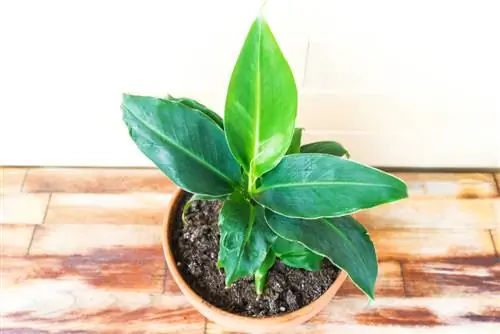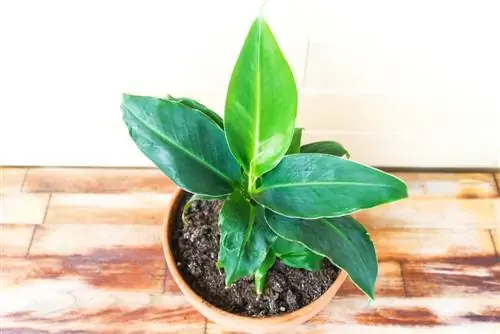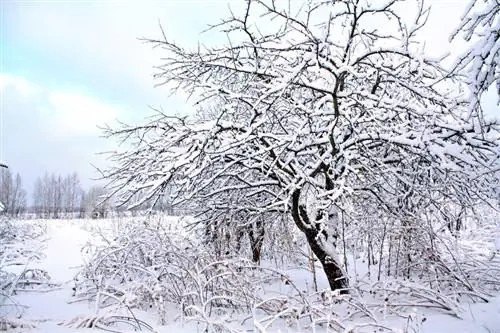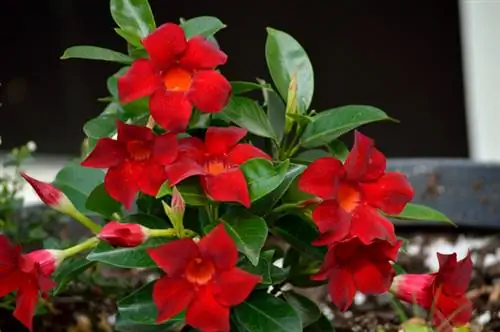- Author admin [email protected].
- Public 2023-12-16 16:46.
- Last modified 2025-06-01 06:02.
In winter, a tropical banana palm indoors suffers from a lack of light and heating. Outside, the bitter frost and constant winter wetness are causing the banana tree to despair. With the right measures, you can guide your banana safely through the critical winter period. This is how you can overwinter a banana palm indoors and outdoors in an exemplary manner.

How can I properly overwinter a banana palm?
To overwinter a banana palm successfully, place tropical varieties in a bright, cool location at 12-15°C. Water when the substrate is dry and fertilize every 4-6 weeks. Hardy banana palms require pruning and winter protection using wooden panels, straw and garden fleece outdoors.
Overwinter tropical banana palm bright and cool
A tropical banana palm will resent you if everything stays the same during winter care. Your exotic houseplant cannot cope with the combination of short days, long nights and heating to the max. In order to overwinter properly, the wonderful edible banana (Musa paradisiaca) and other tropical bananas require important modifications in terms of location and care. How to do it right:
- Change of location: Move banana palm to a bright, cool location
- General conditions: Temperatures from 12° to 15° Celsius, humidity 60%, sunny location
- Watering: pour soft, room temperature water when the substrate is noticeably dry (finger test)
- Nutrient supply: add liquid fertilizer to the irrigation water every 4 to 6 weeks in half the concentration
Recommended winter quarters for a banana palm are moderately heated winter gardens and greenhouses as well as bright, temperature-controlled entrance areas or stairwells. The banana will be happy to keep you company in the light-flooded, cool bedroom during the winter.
Hardy banana palm - winter protection is mandatory
The Japanese fiber banana (Musa basjoo) bravely stands up to slightly sub-zero temperatures outside in the bed. If the thermometer falls below -3° Celsius, the banana palm becomes limp and dies. If you equip a hardy banana with winter protection, bitter frost and snow will no longer be a threat. Because the banana palm is actually a perennial, the first thing on the agenda is pruning. How to overwinter a banana palm outside:
pruning
- Pick up a folding saw or foxtail
- Cut back banana shoots to 50-100 cm (hip height is ideal)
- Cut the outer trunks a little shorter than the middle
Create winter protection
Build a protective wall around the cut-back banana palm using wooden panels, straw mats or Styrofoam panels. Fix the wall with sisal ropes or tension straps. Keep the interior of the winter box warm with straw. As a cover, use a breathable garden fleece that is tied to the protective wall with weatherproof cords.
Tip
Imperial weather in winter means an increased risk of drought stress for your banana palm in the garden. If there is no snow or rain, the banana can dry out in its winter box. If you do your laps outside in bright blue skies and frosty temperatures, please take a watering can with you and water your thirsty banana palm under the winter protection.






